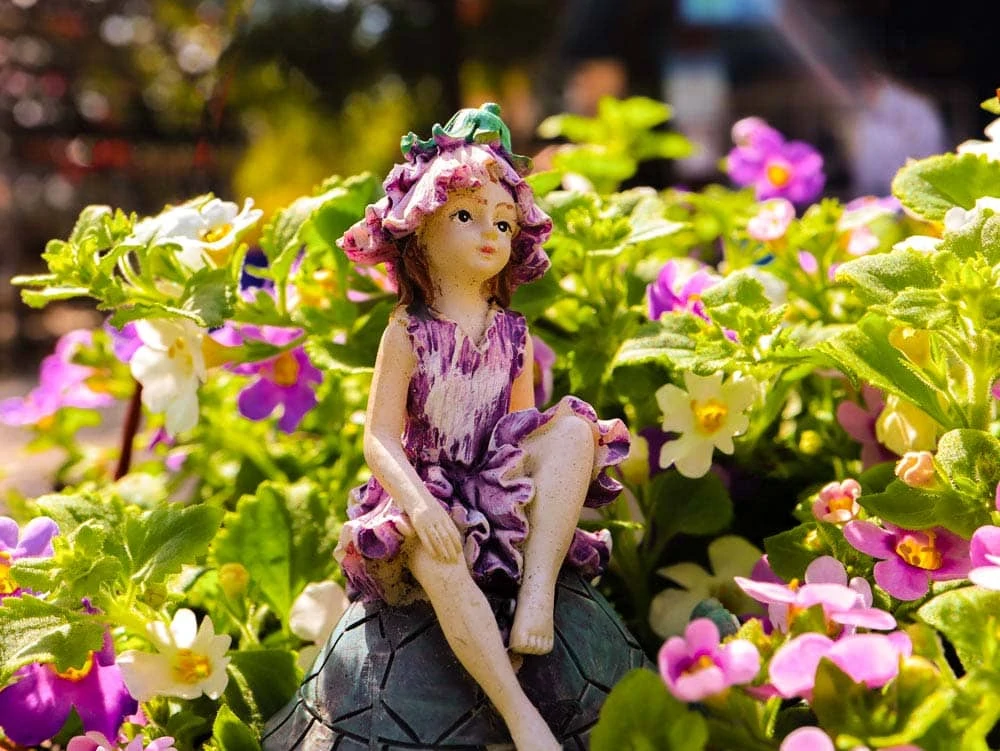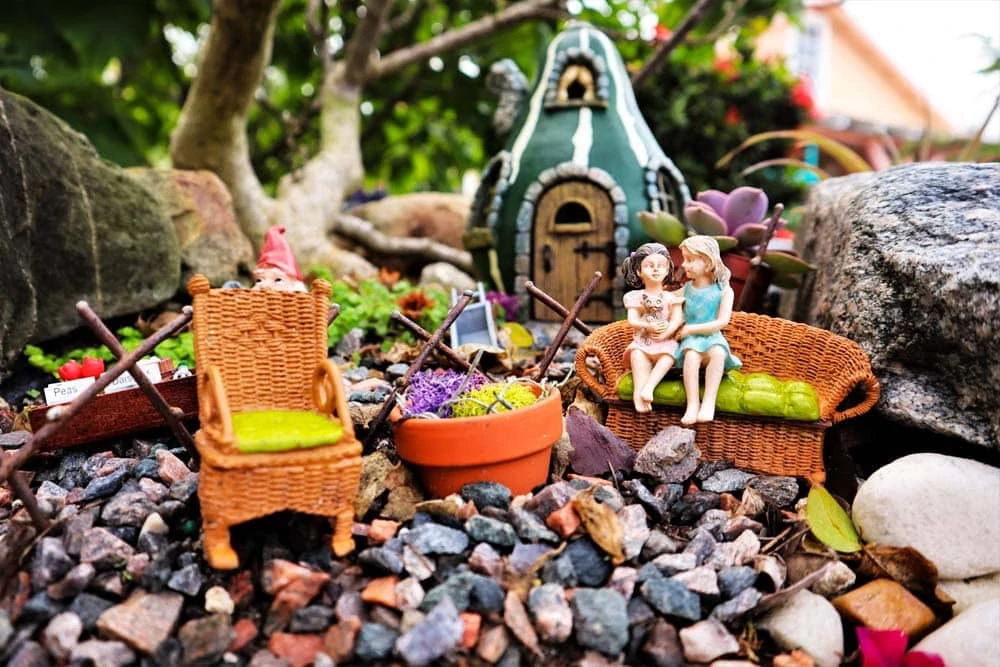by Amanda Rose Newton

Small-scale gardens have relished centuries of fascination and appreciation as they offer a unique way to showcase the wonder of plants without sacrificing space.
From the classic terrariums that welcomed guests to parlors in the early days to walls displaying dozens of different varieties of succulents today, novice and expert gardeners alike can appreciate the art and welcoming nature of plants.
Fairy gardens fit attractively into this world of small-scale container gardening and offer the added benefit of being able to change out the elements based on mood, season, or holiday by simply adding a new costume or piece of fairy furniture.
Small scale fairy gardening
The elements so key for landscape design are at work on a tiny scale, with plant selection based on which textures, colors, and leaf size can recreate the look of full-size trees and groundcovers.
It’s unfortunate that fairy gardens often get cast into the “juvenile” category, as they require just as much thought and preparation as one may put into a formal landscape design for several acres.
Anyone who adores fairies will likely be quick to tell you that they are anything but child-friendly!
In this week’s blog post, we uncover both the sweet and the devious side of fairies in the garden to hopefully give you the inspiration to create your own tiny wonderland.
Once Upon a Time
Fairies have a long family history, with distant relatives including other garden-dwelling creatures such as gnomes, elves, and pixies. Fairies differ from the rest of the clan by most closely resembling humans and often taking on anthropomorphic personality traits and flaws.
The Irish are credited with first introducing fairies in the garden, often depicted as distant relatives who were forced underground due to struggles over land. These distant relatives grew smaller the longer they remained underground and were eventually able to sneak above ground to play tricks on humans or simply to explore.

We humans did not take kindly to constantly having to be on high alert for sneaky fairies, so in order to make nice with them, we began planting flowers that fairies favor in order to entice them to behave. If a fairy was pleased by a flower, it would create its home underneath it and consume itself with the decorating process (new homeowners know all about this), leaving humans be.
Unfortunately for the fairies, the act of “collecting” them like flowers also became a popular part of the lore. Humans would capture the fairies and add them to collections, much like herbarium specimens for display and trade. Think of it as an early version of Pokémon cards where collecting them all was just as important!
For more on this fun idea, and how to create your own pressed fairy book, check out the still-classic Lady Cottington’s Pressed Fairy Book by Terry Jones. It features beautiful illustrations by the amazing Brian Froud, so worry not– no fairies were harmed in the making!
History of Fairy Gardening
As a craft, fairy gardening is relatively new as it happened within the last 60 years (there were still CAMERAS then, for all you young readers). Anne Ashberry is credited with being the first professional fairy gardener, a term I think all of us wouldn’t mind adding to our list of titles. She predominately worked with the disabled or elderly and wanted to harness the therapeutic attributes of gardening on a smaller scale.
Enter the fairy garden!
Fairies are known to bring good luck and happiness, and this proved to be just the case for Ms. Ashberry, who went on to publish several books on the subject and enjoyed worldwide acclaim.
Flowers for Fairies
Next week, we will go through the step-by-step process of creating your very own small-scale wonderland! In the meantime, to start brainstorming, here is a list of the flowers that have been suggested in the literature to be attractive to our tiny human-like garden friends.
Fairies are attracted to life and favor their homes be large trees, such as oaks. Plants that provide food, shelter, and flowers are also favorites. Large flowers can double as parasols, bedspreads, or outfits for the fashion-forward fairy.
List of Fairy Garden Favorite Plants:
Pansies- on the way out!
Bee Balm (Try our Spotted Horsemint)
Foxglove (too late for those, but any bell-shaped flower will create the same effect)
Sunflowers
Daisies
Nasturtium
Violets
St. John’s Wort
Heather
Thyme
Rosemary
See our online inventory for a great selection of flowers and herbs for your fairy garden.
Check back next week for another great blog on how to make fairy gardens!


